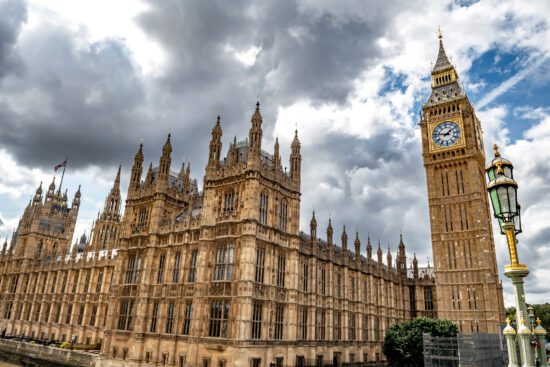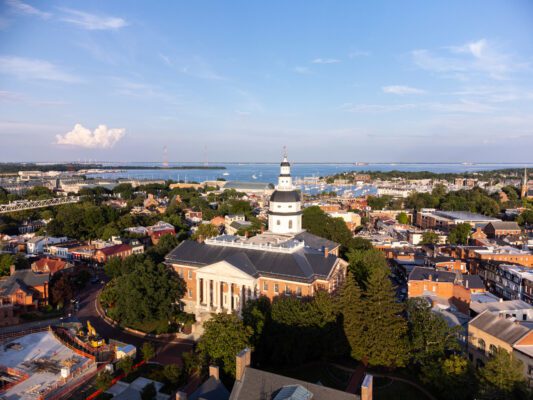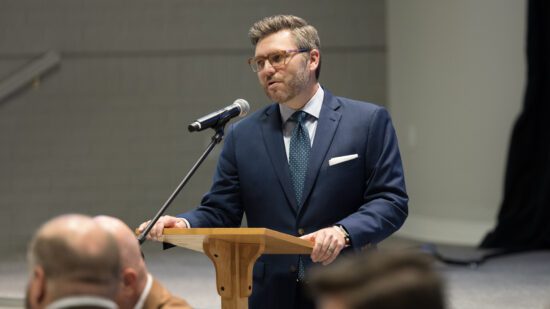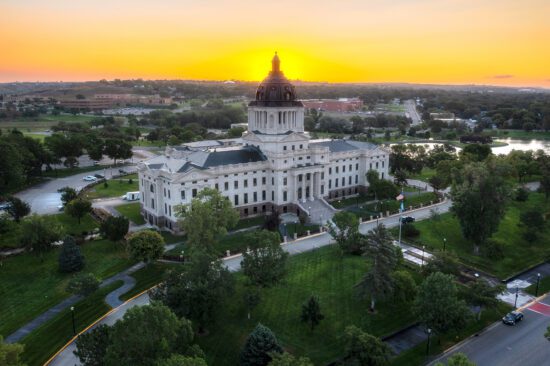JT: How were the arts viewed during the Reformation? And how can certain biblical truths that flow out of the Reformation (i.e. the solas) influence an artist’s work?
MC: The best word to describe the relationship between the arts and the Reformation is tension. On the one hand, there’s was a reactionary spirit (and not an entirely unjustified one) that wanted to reject Roman Catholic sacramentalizing of the arts, particularly as it relates to icons and the veneration of the saints. At the same time, there were voices like Rookmaaker, Schaeffer and contemporaries like Calvin Seerveld and Dan Siedell who speak from a reformed perspective and advocate strongly for the role of the arts and the imagination in the formation of the church.
The Reformation’s core ideas—salvation by faith alone through grace alone—allow an artist a radical freedom. The work doesn’t define us; the gospel liberates us and gives us a beautiful identity, a wholeness that we can’t find any other way. An artist who knows this may not, in fact, become a better artist, but will certainly become a more healthy and whole individual.
JT: How does your faith inform and shape how you contribute to the arts?
MC: The arts, broadly, are simply another form of work, and they function much like any other kind of work. Like engineering, teaching and medicine, they exist to help sustain a flourishing human society. They stimulate, enrage, inspire and mystify us in order to evoke our deepest thoughts and feelings. In short, they keep vital and healthy one aspect of what it means to be made in the image of God: a flourishing and human imagination.
LP: Sometimes I feel like people talk about art and faith as if they are separate things. For me, it would be like asking how does your left hand feel about your right hand? They are both my hands. I use them together to accomplish the same goals. That’s how I feel about my faith and creativity. Being a fulltime artist, my faith impacts everything I do. I can’t separate them, even if I try. Art making is part of how I understand who God is, appreciate God as a creator and relate to him.
JT: What’s unique about being an artist and a Christian? What drives you as an artist to pursue excellence?
MC: Christians are liberated from their art. In almost any type of vocation, there’s a temptation to blur the lines between self-identity and the quality of our work. This can turn us into workaholics and can lead to a tremendous amount of anxiety about our work. If it isn’t good enough, then we aren’t good enough. As a Christian, I’m freed from that burden; my self-worth is found by being made in God’s image. So a Christian artist is free to try and fail, to receive scathing reviews and high praise, and to let it all wash off our backs, free instead to simply enjoy the work and learn from artistic success and failure.
LP: I don’t think of myself as separate from my other artist friends that don’t ascribe to the Christian faith. I think we’re all trying to make powerful art that impacts culture and society. I think pursuing excellence is our best tool in getting the most genuine response to what we’re trying to accomplish with our art. And I think it’s imperative that we do the best we can because God created all things with excellence including mankind, animals and plants. That compels me to not be lazy when I create, which can be hard because creating is life-giving and exhausting at the same time.
JW: It’s not uncommon in design to spend late nights researching, sketching and working on a project and realize that you’ve [just] worked a bunch of bad ideas out of your system. There are also some projects where the perfect idea comes to you as the client is walking you through the creative brief. Working in a profession that regularly requires these moments of inspiration makes it clear that I’m in no way in control and that every new idea serves as a reminder of God’s providence. The belief that all inspiration comes from God and the fact that he’s chosen me as the steward of this idea is a pretty convincing motivator for me to pursue excellence. I do so with the belief that I’ll be equipped and that excellence in my craft will create opportunities to point people to Christ.
JT: There seems to be a resurgence of the arts in evangelicalism in recent years. How has it impacted the ways you create, and where do you see evangelicals headed in the upcoming years?
JW: I couldn’t be happier to see things trending in this direction. In recent years, I’ve taken on projects with my church as an opportunity to push myself creatively and take risks in a way that I wasn’t able to five years ago. Over the last five to 10 years, we’ve seen what a design-centered approach can do to set companies like Apple apart in the business world. I think similarly positive results can apply to evangelicals once we’ve found the right ways to harness that power.
MC: I’m not sure how new the resurgence of the arts is in evangelicalism. You can trace threads of interest in the arts throughout the post-Reformation years, though it’s focus has shifted. At times, it’s in literature and poetry, at other times, music, and still others, in the visual arts. I think the “battles” about the arts will continue—some thinking of them as dangerous, others thinking about them as essential, and everything else in between.
Artists themselves will likely remain somewhat marginal, I fear. This is for three reasons. First, this is the normal space artists seek in society. They tend to want to stand a bit outside of the norm so they can speak prophetically to it. Second, the church’s confusion as to the value of the arts makes artists ambivalent about how much they participate in the life of the church. Third, the Christian subculture is rife with problems that make artistic practice difficult. It creates the impression that every piece of art must share the gospel, must not offend, and must make reference to some other artifact in culture. There’s a cheap commercialism that drives all of this, and so long as Christians are willing to settle for art that confirms their biases and doesn’t offend, it will continue, and many of the best Christian artists will find acceptance of their work apart from their Christian community.
LP: I think there are a few things that contribute to that [resurgence], like the internet and affordable studio tools. You don’t have to be famous and have label support to make a professional sounding album. We have more access to what’s being created in smaller subsets of the world. We’ve also seen people interested in the ancient church, language, traditions and liturgy. There seems to be a rise of people discussing deep ideas in art in regards to [their] faith. So is it a resurgence, or is it that we just have better exposure to better art? It could be both. And in the next few years, we’re going to see a lot of great art being made around the topics of oppression, freedom, standing up for and loving our neighbors.
JT: In what ways can the church help support the growth and cultivation of the arts in our communities?
MC: Love your artists. Attend their shows and gallery openings. Support them by buying their art and music. Ask questions when you don‘t understand, and hold artists to the same standard you’d hold an engineer or a teacher. One doesn’t expect an ichthus worked into the design of every Christian engineer, nor do they expect the gospel worked into a lecture on Euclidian Geometry. Likewise, the Christian artist is called to do excellent work that inspires and provokes. Their work may not be explicitly Christian, and that’s okay. The church’s role isn’t to critique this work, but to call the Christian to do their work Christianly: with character, excellence and humility. Lastly, don’t expect artists to contribute their work for free to your congregation. Respect what they do like you’d respect a roofer or a plumber, and when you want work commissioned, pay them a fair price.
JW: My former church had an abandoned building on their block that was going unused, so members helped divide it up into studio spaces for local artists to work out of and host art shows. While I realize that few churches have spare buildings lying around, the way they took action sent a loud message to the local art community— they made it clear that artists were wanted members of the community.
LP: Support and space. Tell artists that we support them and want to be here to have conversations as they’re working out ideas in their art. Allow them to have the space they need to create. Send them notes. Let them know you’re praying for them. Send them a meal. Creating something is a lot of hard work and takes a lot of energy and time.
JT: What advice would you give younger believers who aspire to the arts as a vocation?
JW: What makes artists special is that they see the world through a different lens than most. At times it can feel like you don’t “fit the mold” or that you’re not as valuable as those with more common, functional roles within the church. Your gift is a blessing, and you’ve been given those abilities to compliment those around you and bring glory to God.
MC: Seek to learn from the very best. Work your way up through the channels that have been established in the art world—small film festivals, local art galleries and music venues, small literary journals, etc. Do the work on a small scale, and never stop learning. Beware the instant-gratification and feedback you might get from the Christian subculture. Seek instead to make your way, slowly and steadily, in the world of the arts that you respect the most.
LP: Don’t be afraid of working hard. Really devote yourself to your craft. It takes time. There’s a degree of raw talent that needs to be there initially to make you feel like you have the ability to pursue art, but all of the great artists I’ve met and known are devoted. There’s a reality of time and energy spent on practice that’s inescapable. And be don’t be afraid to really fail. I have records I’m embarrassed exist, but I learned a lot from those records, and I’m still making music.
This article is from the latest edition of Light Magazine. You can check it out here.












